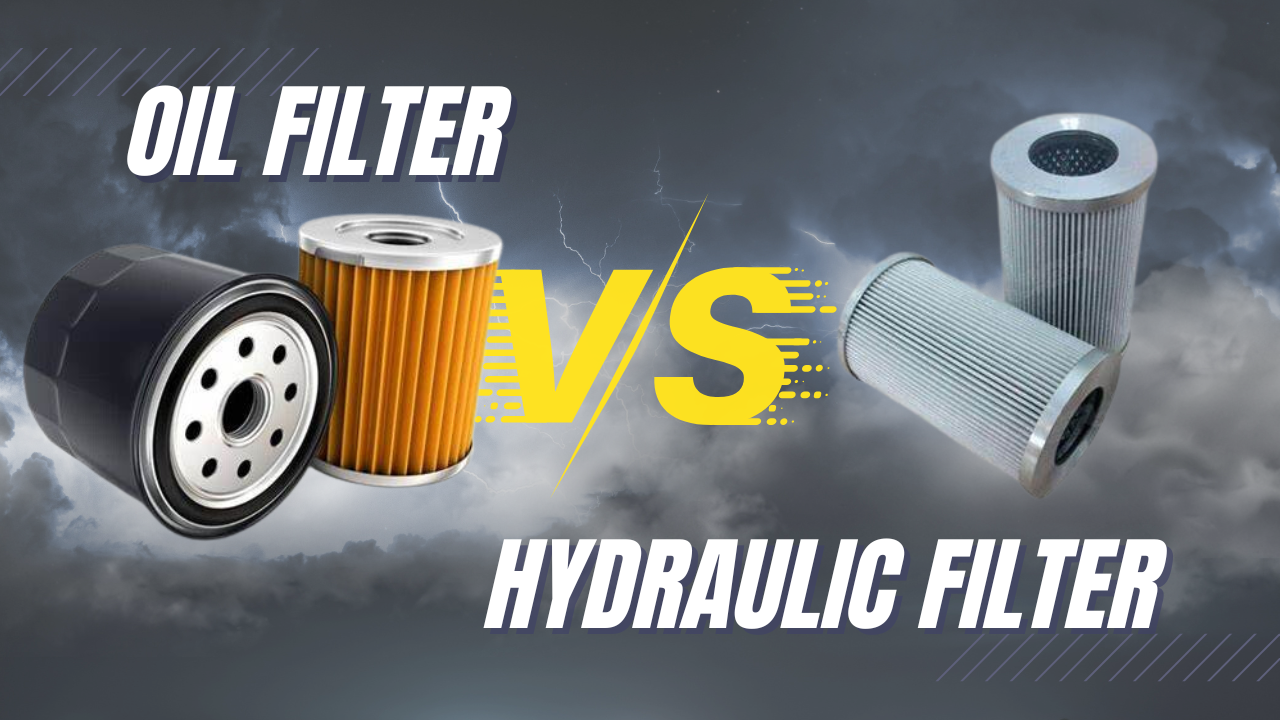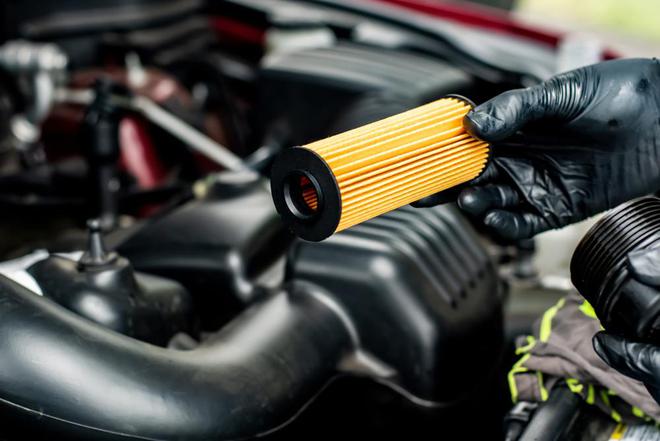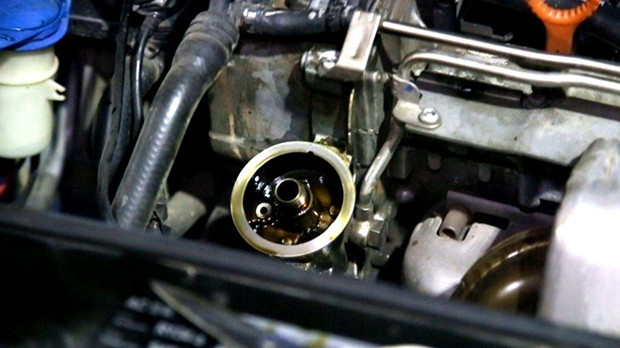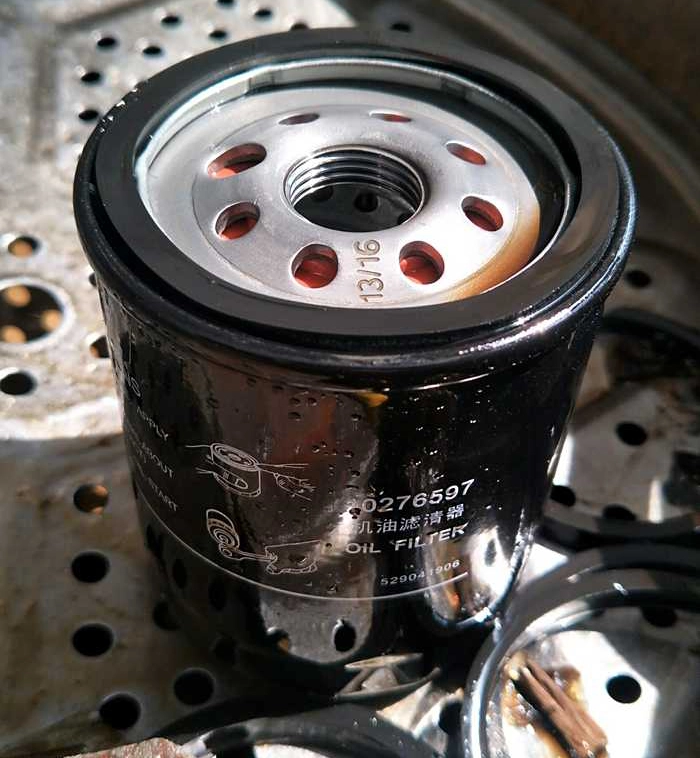Understanding the difference between oil filter and hydraulic filter
In the daily operation of mechanical equipment, oil filters, and hydraulic filters play crucial roles. While both types of filters are used to purify oil, their designs, functions, and applications are quite different.
This article provides comprehensive knowledge to help your equipment run efficiently and last. We’ll explore the question, “Is there a difference between oil filter and hydraulic filter?” and uncover how their distinct roles, designs, functions, and applications impact the performance and longevity of various systems.
Basic Concepts of Oil Filters and Hydraulic Filters
Definition of an Oil Filter and Its Role in an Engine
An oil filter, synonymous with the oil grid, plays a crucial role in the engine’s lubrication system. Its role is to filter the engine oil that circulates inside the engine, removing dust, metal particles, carbon deposits, and other impurities produced during the engine’s work process. This ensures that clean lubricant lubricates all engine components, protecting the engine and extending the vehicle’s life.
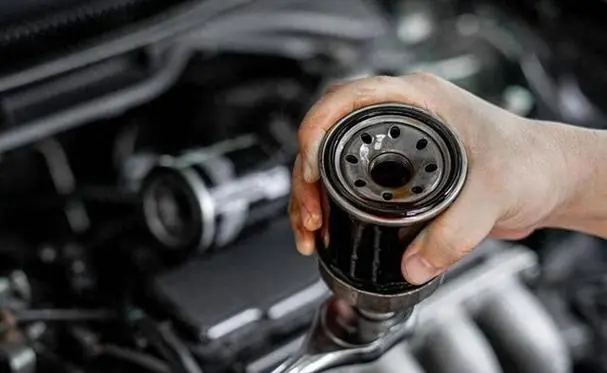
Definition of Hydraulic Filter and Its Role in the Hydraulic System
A hydraulic filter, also known as a hydraulic oil filter element, is a key component in the hydraulic system. Its role is to filter hydraulic fluid to remove various contaminants such as metal particles, fibers, silica, elastomers, rust, and other contaminants, thus providing clean fluid, improving the efficiency of the hydraulic system, and protecting the integrity and reliability of the hydraulic system.
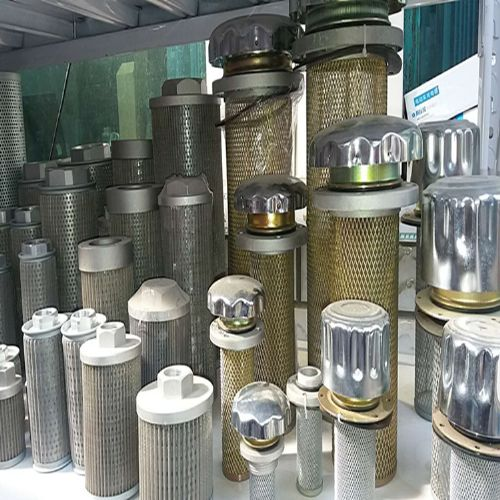
The Working Principle of Oil Filters and Hydraulic Filters
How Oil Filter Work
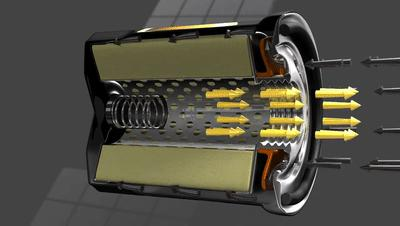
- Filtration: During the circulation process, oil passes through the filter’s multi-layer filtration material to eliminate impurities.
- Flow: Clean oil then flows back into the engine to continue its lubrication and protection.
- Replacement: Over time, the filter becomes clogged and requires periodic replacement to maintain its efficiency.
How Hydraulic Filter Work
- Suction: Hydraulic fluid circulates through the system and is drawn into the filter.
- Filtration: The filter material inside the filter captures contaminants, ensuring the hydraulic fluid remains clean.
- Circulation: Clean hydraulic oil is returned to the system to continue its operation.
Structural and Material Differences Between Oil Filters and Hydraulic Filters
Structural Design of the Oil Filter
- Combined Filtration: Typically consists of an oil collector, oil coarse filter, and oil fine filter, which can be connected in parallel or series in the main oil pipeline to improve filtration efficiency.
- Multi-layer Filter Media: Increases the filtration area by folding the filter media to enhance efficiency.
- Center Tube: Guides the filtered oil back to the engine, ensuring continuous lubrication.
- Bypass Valve: Prevents oil from becoming too viscous at low temperatures, ensuring adequate engine lubrication.
- Check Valve: Prevents unfiltered oil from flowing backward, ensuring immediate lubrication upon engine start.
Structural Design of the Hydraulic Filter
Mesh Filter: Made of metal wire, with a simple structure, good oil permeability, washable, but lower filtration precision.
Line Gap Filter: Made of metal wire winding, large filtration capacity, but not easy to clean.
Paper Filter: Composed of flat or wrinkled phenolic resin or wood pulp microporous filter paper, generally three layers to increase the strength of the filter element.
Magnetic Filter: Uses permanent magnets to remove iron filings in the oil.
Sintered Filter: Filter element made by pressing and molding metal powder, such as bronze powder, with high strength and good performance in withstanding thermal stress and impact.
Stainless Steel Fiber Filter: Extruded from stainless steel fiber, can be repeatedly cleaned and used, but at a higher price.
Filter Material for Oil Filters
- Porous Fiber Filter Media: Typically made of porous fiber filter media, adapted to high temperatures and corrosive environments for efficient filtration.
- Glass and Polyester Synthetic Fibers: Improve filtration efficiency and durability, with enhanced stiffness through resin impregnation.
- Cellulose Fiber: Traditional filter paper material to improve filtration performance.
- Resin Treatment: Filter material treated with resin to improve structural strength and extend service life.
Filter Material for Hydraulic Filters
- Coarse and Fine Filters: Designs include coarse and fine filters to meet the pressure, flow, and installation space requirements of different hydraulic systems.
- Washable Design: Some hydraulic filters are washable, reducing costs and minimizing maintenance.
- High Pressure Tolerance: Designed to withstand high pressures, ensuring stable operation in high-pressure systems.
Installation Location and Replacement Cycle Differences
Oil Filter Replacement and Location
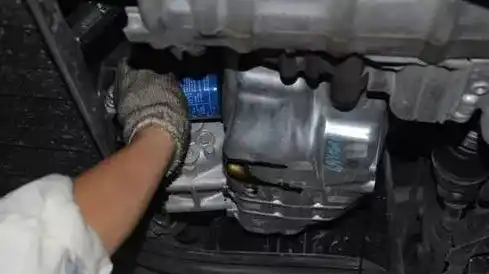
The engine oil filter is usually installed in the engine cylinder block, in the middle lower position, near the oil pan. Its replacement cycle is typically synchronized with the oil change cycle, usually recommended every six months or 5000 kilometers. Changing the oil filter during oil changes ensures good engine lubrication.
Hydraulic Filter Replacement and Location
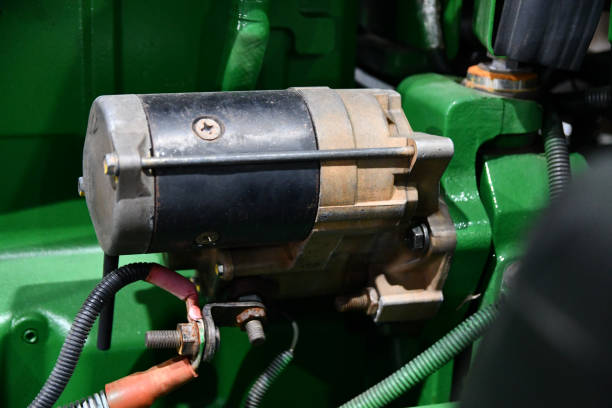
Hydraulic filters can be installed in various locations in the hydraulic system, including the suction, pressure, and return lines, to ensure effective filtration at all stages. Replacement intervals for hydraulic filters are typically longer than oil filters because they are exposed to a more stable hydraulic fluid environment. Specific intervals depend on the degree of hydraulic oil contamination and system operating conditions, but they are usually inspected at least once a year and replaced when necessary.
Filtration Efficiency Differences Between Oil Filters and Hydraulic Filters
Oil Filter efficiency
Oil filters focus on removing particulate matter that could cause engine wear, emphasizing engine lubrication maintenance. The best oil filter will effectively remove contaminants, ensuring optimal engine performance and longevity.
Hydraulic Filter efficiency
Hydraulic filters have more stringent particle size filtration requirements due to the precision needs of hydraulic components, which must remove particles that can cause clogging or damage to valves and actuators. The diesel engine oil refiner filter is a specialized type of oil filter designed to handle the specific demands of diesel engines, providing superior filtration for these heavy-duty applications.
Potential Impact of Improper Maintenance on System Performance
- Clogged oil filters can reduce oil flow, leading to increased engine wear and potential engine damage. The oil filter housing plays a crucial role in protecting the filter and ensuring proper filtration.
- Clogged hydraulic filters can lead to reduced hydraulic efficiency, increased system heat, and potential damage to hydraulic components.
Conclusion
the answer to “is there a difference between oil filter and hydraulic filter?” is a resounding yes. While both oil filters and hydraulic filters are designed to filter impurities from fluids, they operate in different systems and face distinct challenges. Oil filters are subjected to high temperatures, pressures, and speeds, while hydraulic filters are required to function in high-pressure, high-precision, and high-stability systems. Both types of filters play an indispensable role in their respective systems, protecting mechanical systems from wear and damage through filtration mechanisms, and ensuring the efficient and stable operation of the system.

